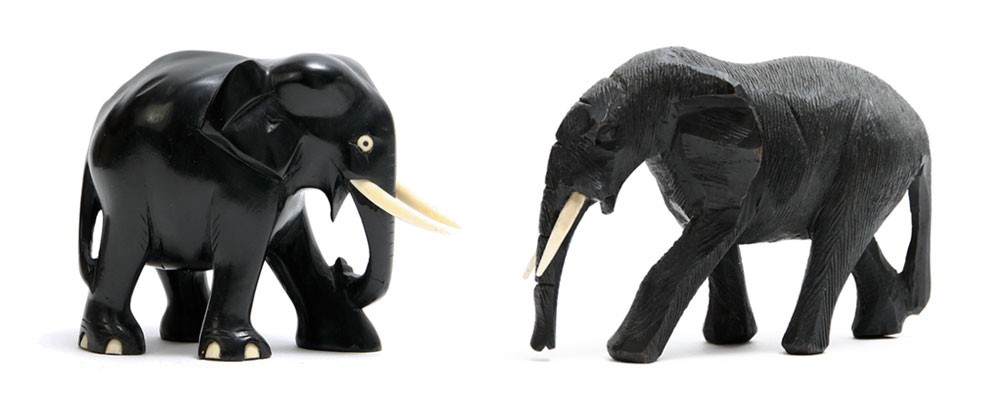A question came up the other day on a Facebook group about the origins of a small black ornamental elephant. I see a lot of ornamental elephants while I’m out and about, some are African but most of them are from India or Asia, but first some basics.
There are a few notable differences between Asian and African elephants. African elephants have much larger ears to help dissipate body heat due to living in a hotter climate, while Asian elephants have relatively small ears, have more pronounced toenails and smaller tusks than their African counterpart, but the real difference between the two is the shape of the head.
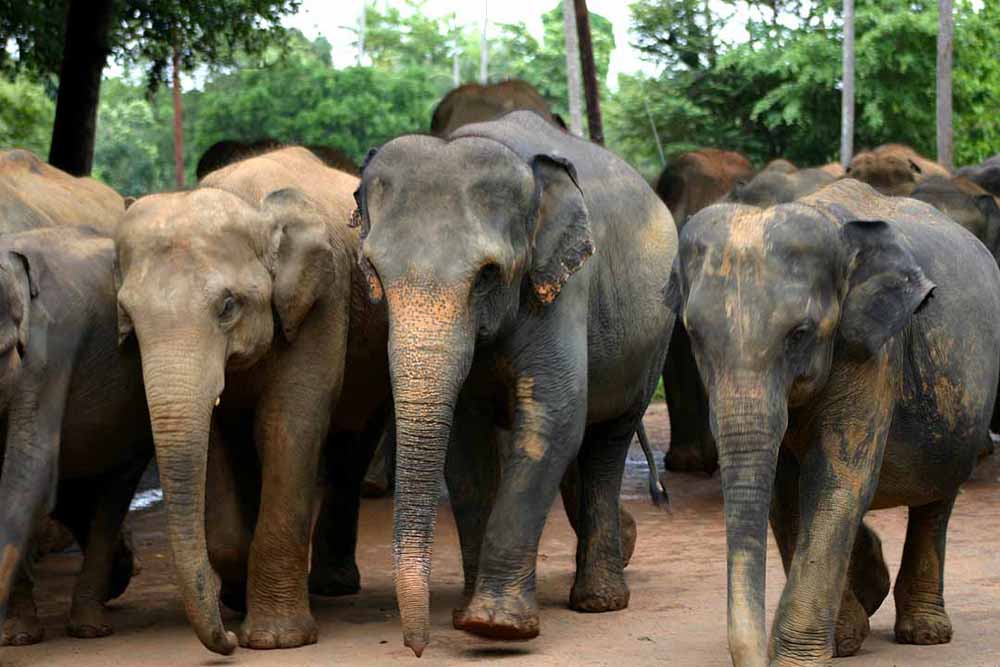
As you can see in the image above Asian elephants have a twin domed forehead giving them a distinctive groove in the middle of the head. Whereas an African elephant has a more rounded head as in the image below:
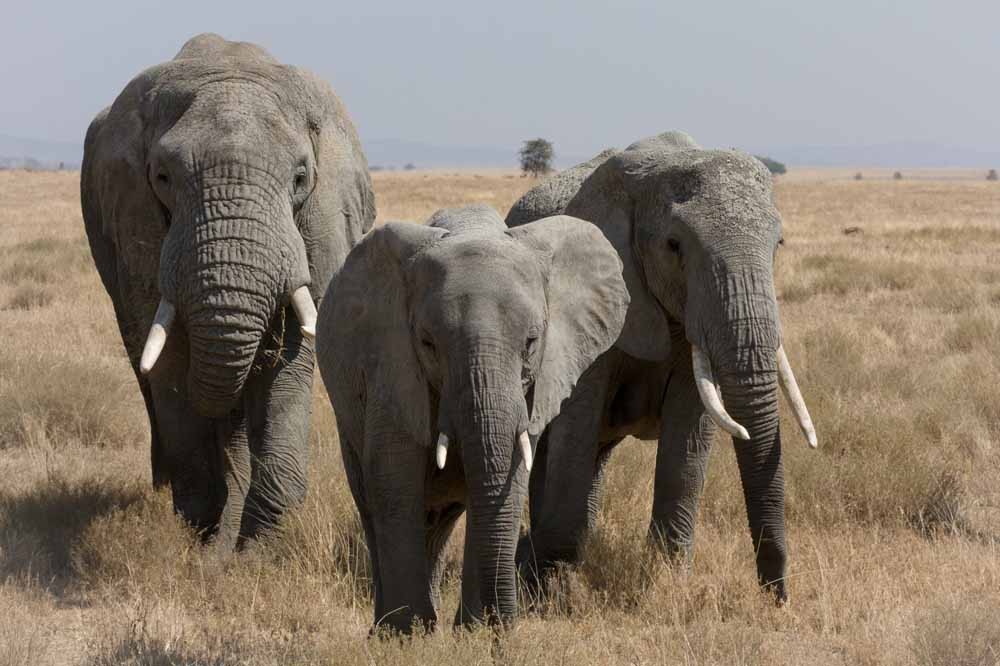
Where Do Vintage Ornamental Black Elephants Come From?
We often attribute the elephant to Africa as it is one of the most prominent of all of the wild animals on the African continent. However, in the world of vintage if you come across an elephant ornament, it is more likely to have originated from Asia, as the Asians have a far larger cultural attachment to the elephant and over the millennia have used elephants ceremonially and for work.
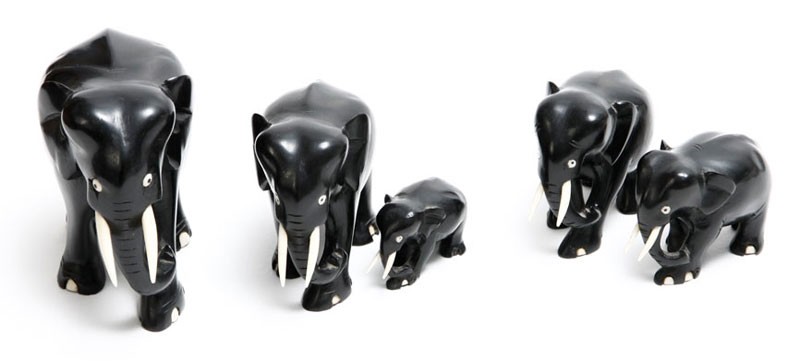
These small vintage elephants are made from black ebony (kaluwara) or are “ebonized” which is a process of blackening a different kind of wood to make it look like ebony and are Asian elephants. They are most likely to have been made in what was once a British colony called Ceylon or what we know of today as Sri Lanka, which has a long history of wood carving. The woodcarvers of Sri Lanka often started their profession in training towards becoming employed as carvers of ivory or architecture.
In the late 1900s when Sri Lanka was still under British rule there were companies who employed these carvers in factories where they would mass produce, by hand, carved wooden souvenirs which would then be exported across Asia and to (the important part) Africa. And this is where the mix up often begins.
Back on the Facebook group and the wider internet. I met people who were adamant that a family member had brought their elephant back from Africa, and they probably did bring it back from Africa. I would also see a lot of eBay and Etsy listings doing the same thing and calling these Asian elephants African.
It’s understandable as most people in the last century, and even in today’s day and age, would not have known there was any difference between Asian and African elephants. So Asian ornamental elephants would have been sold in Africa to the unsuspecting visitors who would never have known any difference.
Many of these vintage elephants are quite old, not only would they have been brought back by tourists, but also by allied soldiers during both the first and second world wars and soldiers based in India during its British rule and then brought home as souvenirs. They are increasingly becoming hard to find, especially the graduated sets of elephants that still have all their tusks.
Now I just want to make it clear I am not actually saying that every elephant brought back from Africa originated in Asia. I have seen some beautiful vintage elephants and many other wooden sculptures that were made in Africa by skilled African woodcarvers.
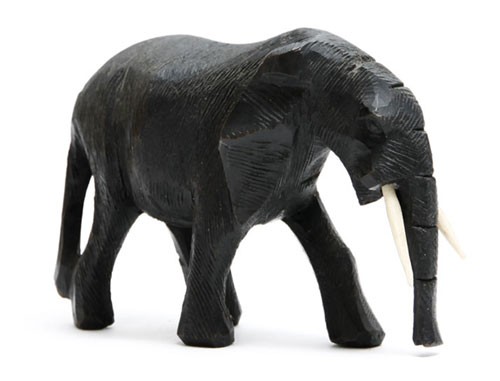
Vintage black ebony African elephants do exist though. I have one as pictured above which is ebonized, and you can find some that have stickers with “Made in Kenya” that are ebony, but they too were probably made in Sri Lanka.
The reason I say this is because this has been going on for quite some time.
Recently i tracked down a wooden souvenir from Jamaica that is quite modern. It had Jamaica carved into its base and the seller told me it was Jamaican. But (me being me) I tracked the souvenir down (with the power of Google) and it turned out they were made by a company in Bali who shipped worldwide.
I hope you enjoyed this small clarification and if you have anything to add please email me and let me know.

